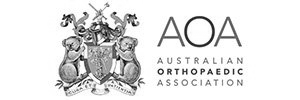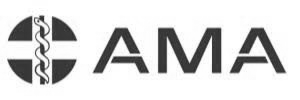Toe Deformities
What are Common Toe Deformities?
Toe deformities are common problems that occur due to abnormal positioning of the foot bones, inadequate biomechanics, and diseases such as arthritis affecting bones and tissues of the foot.
Toes are the digits in your foot and are associated with walking, providing balance, weight-bearing and other activities.
A variety of toe deformities occur in both adult and children's feet. The most common toe deformities are:
- Hallux Valgus: Hallux valgus is a common toe deformity in which the great toe is shifted laterally and lies over the second toe. The first metatarsal bone is deviated towards the medial side causing a prominence over the medial aspect of the metatarsophalangeal (MTP) joint. A fluid filled sac (bursa) may form over this prominence which may result in a painful bunion caused by continuous irritation and inflammation. Foot pronation (flat feet) may sometimes be associated with this condition.
- Hammer Toe: Hammer Toe is a deformity in which there is downward bending of the middle joint of the toe or the proximal interphalangeal joint (PIP). Although it can affect the other toes, it most commonly affects the second toe. It may be present at birth or may result from wearing shoes that are too tight which forces the toe to bend forward. It causes no pain and does not require any specific treatment. Hammer toe can be treated by wearing well fitting shoes that has enough space for the toes to stretch.
- Mallet Toe: Mallet toe refers to the downward bending of the third joint or distal interphalangeal joint (DIP) giving it a mallet-like appearance. Corns or calluses may develop over the deformity as a result of constant friction against the footwear. Mallet toe can be inherited or may develop from wearing shoes that are too tight or high-heeled.
- Claw Toe: Claw toe is a rare deformity but occurs in association with cavus foot, Charcot-Marie-Tooth disease or myelomeningocele. It affects all the toe joints and results from hyperextension of the metatarsophalangeal (MTP joint or 1st joint) and flexion at the PIP (2nd joint), and DIP (3rd joint) joints. It results from altered structural anatomy and /or neurologic disorder that cause muscle imbalances.
- Bunionette (Tailor Bunion): Bunionette is less common and occurs at the fifth MTP joint. When this occurs, the fluid sac over the lateral side of the fifth MTP joint becomes prominent and inflamed causing pain. Padding is done to relieve the discomfort. If this does not help, surgical correction will be needed.
What are Causes of Toe Deformities
Certain disease conditions such as diabetes, stroke, osteoarthritis, and rheumatoid arthritis affect the functioning of muscles and nerves and can cause tightening of ligaments or tendons resulting in these deformities.
Toe deformities can be
- Congenital, present at birth, or can occur later in life.
- Wearing improperly fitted shoes or high heeled shoes.
- Accidents or injuries can result in fractures and lead to toe deformities.
Improperly fitting footwear can result in hard skin outgrowths from high pressure and friction.
Symptoms of Toe Deformities
At the onset of the problem, the deformed toe is usually flexible, Therefore, it is recommended to see your doctor for early treatment measures.
The symptoms associated with hammertoe, claw toe and mallet toe are similar and include
- feeling pain while wearing shoes
- having difficulty finding properly fitted and comfortable shoes.
Toe deformities not only affect the alignment of the bones, joints and tissues in the foot, but may also affect alignment of the weight bearing joints such as the hips or knees resulting in further problems.
Non Surgical Treatment for Toe Deformities
Initially, toe deformities are treated by conservative treatment measures to restore or maintain walking ability, relieve pain, and also to delay progression of the deformity. Conservative treatment includes
- Wearing specially designed shoes with cushions or pads with an enlarged toe box area to prevent skin breakdown.
- You will be instructed to avoid wearing tight, narrow, or high heeled shoes.
- Splints or tape may be applied to reposition the toes, and
- Regular toe stretching exercises are also recommended.
Surgery for Toe Deformities
Surgical treatment is recommended if conservative treatment fails to relieve symptoms, or the deformed toes become rigid and immovable. The main objective of the surgery is to restore normal toe alignment and return the foot to normal pain-free function.
The surgical procedure is chosen based on the stability of the deformed toe, whether it is flexible or not.
- Flexible Toe - Where flexibility exists in the toe, then the surgeon will make an incision over the deformed toe joint and realign the tendons and ligaments. Pins may be placed to keep the toe in position while healing. The incision is then closed with sutures and covered with a sterile dressing.
- Rigid Toe - In cases where the deformity is rigidly fixed, then the surgeon will make an incision over the joint of the deformity, realign the tendons and ligaments, and also perform an Osteotomy, removal of bone pieces. Pins are also inserted to keep the toes aligned while healing. Finally, the incision will be closed with sutures and covered with a sterile dressing.
What if Toe Deformities goes Untreated?
If left untreated a Toe Deformity can become rigid and immovable affecting your ability to walk.





